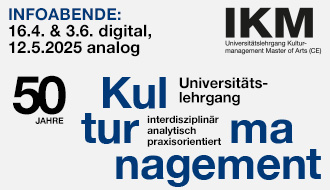
Season 1, Episode 5: A Conversation with Li Zhenhua
An: Are you in Arles on holiday?
Li: It’s always a mix of holiday and work. In 2015, I collaborated with the Arles Photo Festival to bring it to China (Jimei x Arles). So, there is a long connection between me and the Three Shadows founding member, Rong Rong. After 2015, I went back every year, also as a guest. I wanted to revisit the city and follow up on its development. I was paying a lot of attention to the new LUMA building and the LUMA foundation. Two years ago, I visited the new museum by the Korean artist Lee Ufan and the Vincent van Gogh Foundation.

How did this connection between Arles and China come about?
It is a collaboration with Jimei, a district of Xiamen. It is called Jimei x Arles. It is highly influential. We always select projects from the festival, for example, from the Discovery Award or from some iconic photo shows. This year, I was again invited as a jury member for Jimei x Arles. This is also our ten-year celebration. It is beautiful to have a reunion!

It is nice to stay connected to a place.
Absolutely, then you know better how things develop. You kind of age with the place. Also, in Arles, the food is excellent! (laughs). I suggest you go there!
I wanted to ask you about your new project, which you’re setting up in a village in Italy.
Yes, Sequerciani Arte Clima. It started in 2021. Since Covid, I had to rediscover my direction in life. I think that nobody would question life so much before Covid. You just think: “Life is like this.” I was working for museums, for Biennials, for all these gigantic art events. But then, during Covid, this all changed. It is interesting that many of those new projects found me, and they are giving me another meaning. Like the Sequerciani project in Tuscany. My wife, Marianne Burki, and I are its co-directors. Also, other projects followed, like, in 2023, in Lhasa in Tibet.
Already before, I knew people, intellectuals and architects, who have been involved in new village development in China in the last ten to fifteen years. I was a bit critical about it. To me, these kinds of projects can be quite clichéd: the intellectual goes down there and presents a so-called idealistic world to the villagers. But during Covid time the village topic was cooling down. Maybe, I thought, this was a good moment that I could seriously step in. Our project in Tuscany is focusing on climate change and art. It is very dedicated to the critical issues about our world, our nature and our own condition.
How did this connection with Italy come about?
We were invited by Ruedi Gerber, a very passionate person who has been running Sequerciani since the early nineties. In 2021, he recruited us because he wanted to do something about art and climate change. This is how we joined. For us, it was a new chapter.
How do you make sure it doesn’t turn into the sort of cliché you mentioned?
By being aware of it. It took me a long time to understand how everything functions. People might have grown up there, but they might not like to be there, also. These kinds of conflicts you must understand, from the historical part, the economic part, but also from the human part, actually, what a human being needs. Of course, you can brag about hyper eco-friendly, but whether that would really help people down there and what those new standards have to do with the local people… How do the local people understand and participate, what would bring them together and how? Also, what knowledge do we know and what do we have to learn?
Since the project started, we had to learn a lot. It’s not like we are introducing other people’s writing and research as our bible for the project. We must initiate it by ourselves. We must be careful in dealing with our cases and treat them as a very fragile plant. And be cultivated by the plant, because we’re fragile as well…
How do you go about creating Sequerciani Arte Clima?
We try to do it very slowly. We invite friends, artists mainly, who have already a practice in this kind of field. Like, for example, Wenfeng Liao, a Chinese artist based in Berlin. He is an artist who is also a mushroom hunter. He grew up in a very little village, witnessing all the changes of village life. Those are the kind of people we would like to invite because they already have a certain knowledge, they grew up in a village and have an interest in nature.
Then, of course, it is up to the artists what they want to develop. Wenfeng Liao was interested in how mushroom systems function worldwide. This turned into research about the roots. He did a project called “The Root Without The Root”. He made drawings about the dead roots of the forest that are killed by mushrooms. The root is dead but, at the same time, it is alive because the mushroom is in there.

Do the invited artists show their work?
For us, there is no need to have a result. Artists can come, connect with Sequerciani, and with the medieval town called Tatti. They can explore nature, wind, soil, vineyards. It is up to the artists what to create. There is no stress to show it.
That is exceptional!
We aim for a feeling of a laboratory, that people can work together with the farmers, the scientists down there, just with people.
What is your role as a curator? How do you accommodate the artists?
Marianne and I try to accompany each artist and to understand what the process would be, how they will spend their time and give them indications to see beautiful projects nearby, like Niki de Saint Phalle’s Tarot Garden, Daniel Spoeri’s Giardino and Paul Fuchs’s Garden of Sound. I am naming just a few, there are many more.
Does Sequerciani Arte Clima function as a residency?
Yes, but the time is flexible. You can come several times, or only once, for just two weeks, or longer. It depends on your urgency.
How are the local people reacting to it?
Everyone reacts differently. As a strategy, we try to bring in various kind of people. Not only artists that have a name. We try to bring in artists that are suitable for the project. Also, some artists who speak Italian, like Egle Oddo, who is from Sicily. I met her back then in Helsinki. We want to have this kind of communication goal in all directions, by the language that the artist speaks or doesn’t speak. In a certain way, we try to bring people together.
What is the connection you want to make with Chinese villages?
The art project in Yang Deng, China is founded by Mr. Jiao Xingtao, the Dean of Sichuan Fine Art Institute, about twelve years ago. It is a funny project; He discovered the village by driving around and decided to do an art project in this village that has no cultural impact or speciality.
He wanted to do a project in a nameless place. During our visit in March, we understood that many of these villages face similar fates.


All their labourers went away. In the end, you have this extreme situation, in that only children and older people are left. The village is lacking development and people are abandoning it. We found a lot of similarities with our Italian project. Tatti used to have 2000 people, and now it is only 200. It is a similar issue. So, thinking about preservation, how can you continue to have a beautiful village or to have a farm life? Nobody likes to farm anymore!
We were also thinking about exchanging villagers, bringing in an Italian villager to teach people how to make cheese and have a villager from there come to Italy and teach how to make tofu. We want to think about sustainability, resources, and what you can do for micro-businesses and this surviving rural condition.
Like creating a survival kit?
Recently, we had a professor visiting us in Sequerciani who said, “What a dream life in Italy!” But it took filmmaker Ruedi Gerber thirty years of investment. Without him, there would be no beautiful life. Of course, it is double-edged: when you invest there, maybe you interfere too much in the nature of the local life. Then, we should face this conflict and talk about what has to change.
Are there conflicts?
Oh yes, everywhere!
What does it mean for you to create these connections with your home country, China?
I am a person who follows my life. Last year, I got this invitation to Lhasa to make a show and to get to know Tibetan artists. If life is calling me in this direction, I should follow no matter how difficult it is. Maybe this is a period of my life I can be more useful. It is not something tactically chosen by me. Of course, I was prepared for that. I was telling the villagers that I learnt gardening when I was ten. My father was pushing me to do this garden thing for the whole summer. I hated him for it. Other children were playing around while I was the one dealing with the dirt, picking the vegetables, or cutting the grass. But now, I have to say that I am very grateful.
In one summer, you can learn so much. What nature means, or how to plant things together. We would plant chilli next to aubergine, to prevent insects. There are all these methods. Some vegetables you have to water at night, some you can water in the morning, others you have to water three times a day. (Laughs) Or if a certain kind of rain comes, you must know how to protect them.

So, you’re back where you left behind!
Yes. My father planted a seed in me when I was ten. This seed somehow grew and came to the surface when I was 48—thirty years later! This happens to us a lot in life. For a long time, you might be wandering around, a bit lost in life, until a certain moment…
You also seem to enjoy working as a freelancer.
The good thing is that you have your choice. Of course, I have been working for companies, cultural institutions, hotels, etc. for a long time. I learnt a lot also from those kinds of businesses because they taught me how to behave and how to go about practically. I am grateful for that, but I don’t want to be working any longer in that direction. For me, when this kind of “freedom” is relatively, maybe five percent, more controlled by me, I prefer that. Maybe I have less security and less income, but I still prefer that. It gives me this kind of energy to think a lot more beyond than just a job.
Li Zhenhua – https://www.sequercianiarteclima.org/
Link previews episode: Sign Night in Shanghai

About the Series: Curating, writing, and teaching brings An Paenhuysen to many places in the art world, from an artist studio in the 22-story tall Meritomi in Helsinki, a senseless residency in Milan, to the Kempinski hotel in Dhahran. Often, on those journeys, she meets people who are doing something interesting, different, and new. In this series, you will read about these encounters with artists, publishers, researchers, gallerists, and curators that gave off a sparkle so that An turned it into an interview.





